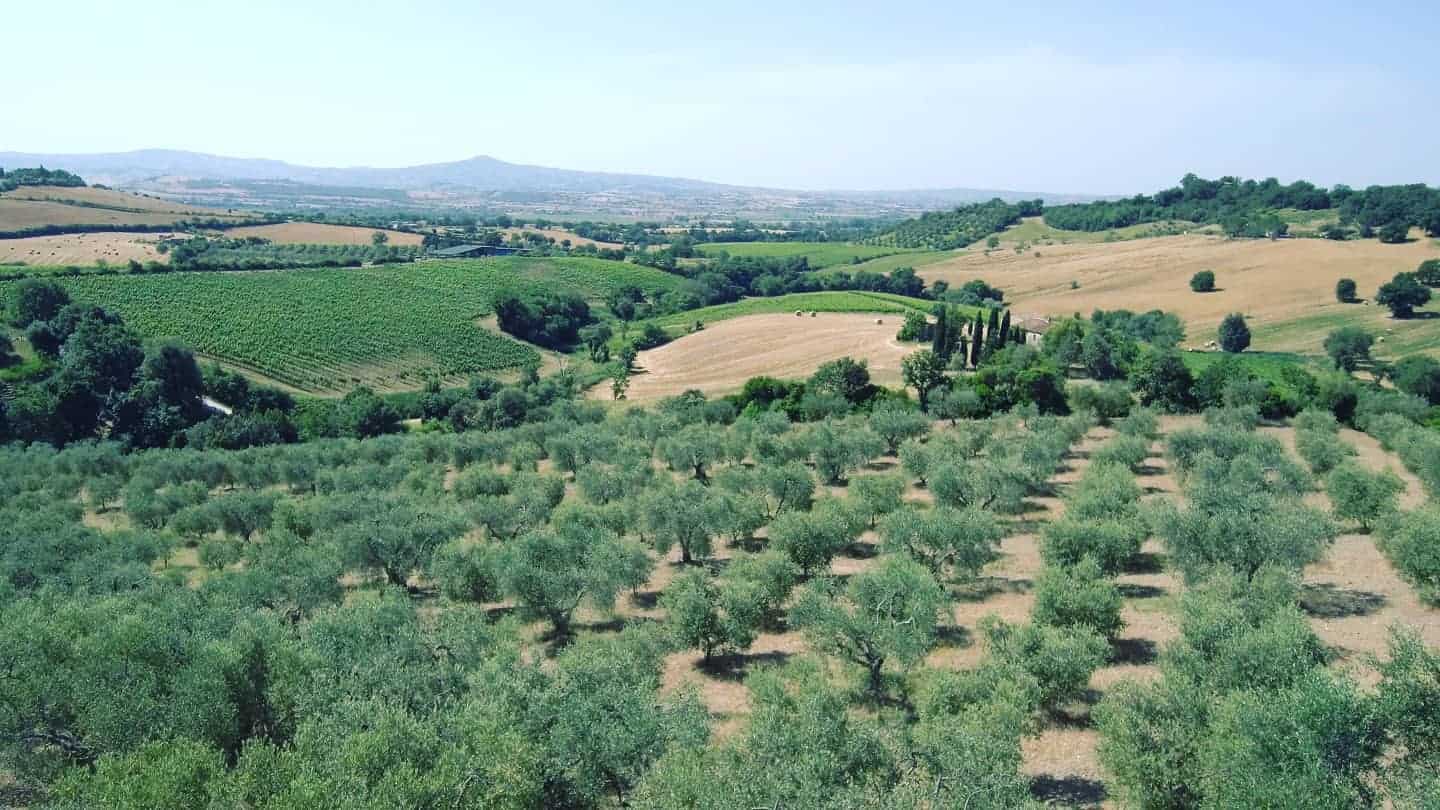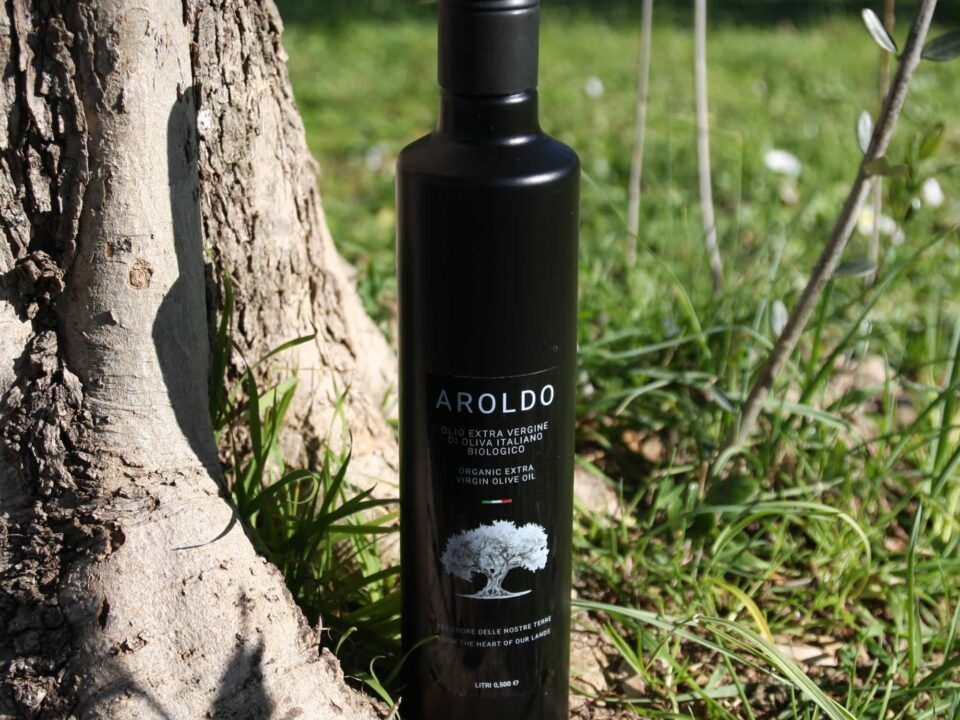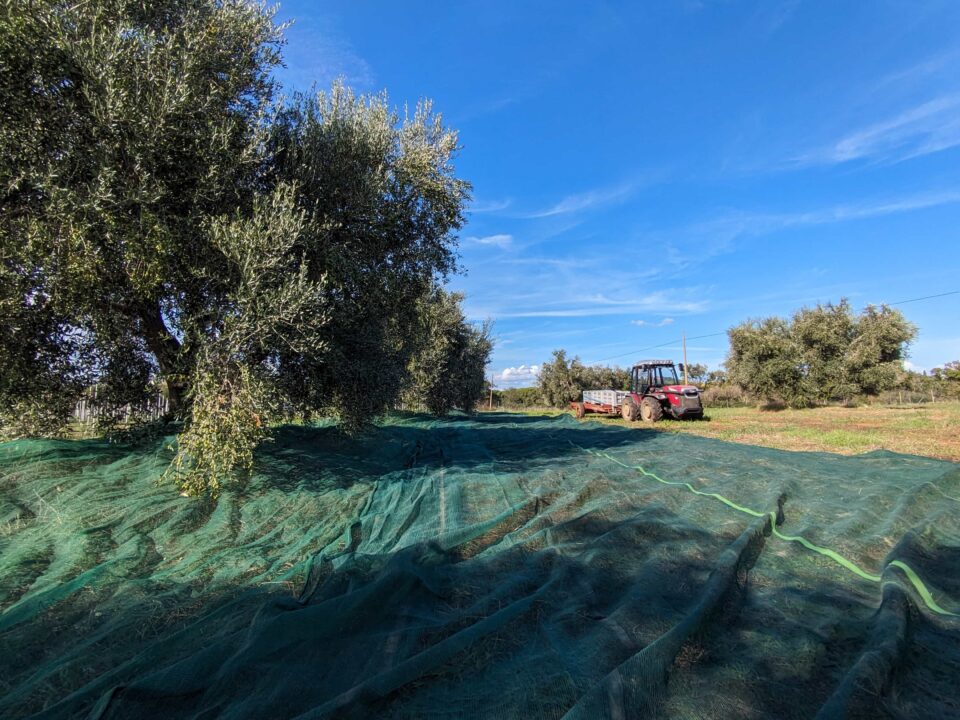Choose an extra virgin olive oil

Knowing how to choose an oil means knowing the processes that lead to its creation.
In the first case, after the rough removal of twigs and impurities, the olives are ground and reduced to a paste by granite wheels. The olive paste is then placed on nylon discs called "fiscoli" and crushed using a hydraulic press, which separates the oil and water from the pomace. The oil is then separated from the water with the help of a centrifuge.
The traditional method, however, is no longer able to adequately respond to the hygienic and qualitative requirements imposed on the modern oil industry. For this reason, it is gradually being supplanted by the extraction method by centrifugation, which makes use of technologically more advanced "continuous" systems.
In this second case, the olives are deprived of twigs and leaves through suction, and then washed to remove soil and other impurities. The olives thus cleaned are transformed into a homogeneous paste by the action of a hammer crusher, and then passed into a "malaxer", a steel tank in which rotating helical blades cause the agglomeration of the drops of oil into more and more drops large. The pasta thus prepared then passes through a powerful horizontal centrifuge, which separates oil, pomace and vegetation water.
The other categories of oil are:
Virgin Olive Oil is also obtained exclusively by mechanical extraction, but derives from more mature olives that have undergone a slight fermentation, and therefore has an acidity of between 0.8% and 2%. It is increasingly rare to find this category on the market. Olive oil is obtained from the treatment of oils with an acidity degree higher than 2%, deriving from highly fermented olives. The refining processes serve to lower acidity and eliminate bad smells. At this point, a percentage of virgin or extra virgin olive oil is added to the chemically refined oil. Pomace olive oil is obtained by extracting what remains in oil from the pate coming from the mills. The extraction of crude pomace oil takes place in "pomace factories". The oil thus obtained is then chemically refined and a certain amount of extra virgin or virgin olive oil is added.
It is understood that it is recommended to consume only Extra Virgin Olive Oils, better if Certified Organic, to be sure of the right purchase.
The factors behind a quality extra virgin olive oil
The quality of an oil depends on numerous factors: the variety of olives grown; the degree of ripeness of the olives themselves at the time of harvest; the collection method used; the time elapsed between the olive harvest and the oil extraction; how the olives are stored during this period of time; the extraction method used; the methods of storage of the extracted oil. A quality extra virgin is obtained only by carefully supervising each phase of the production process.Veraison, cultivar and harvest
The time when it is appropriate to proceed with the harvest - that is, the time when the olives guarantee the maximum amount of oil, but have not yet lost their organoleptic characteristics - is established by referring to the "veraison" index. This parameter associates the various stages of ripening progress with the color changes that occur in the "drupe" (the fruit of the olive tree).Depending on the geographical area and the variety of plant cultivated (characteristics summarized by the term "cultivar", derived from the contraction of the English expression CULTIvated VARiety), the most suitable time for the olive harvest changes considerably: in the case of some oils the fruits are harvested when the skin of the drupe takes on a color between green and yellowish; in the case of others when it is pinkish or light purple; in the case of still others when it is black. For this reason, the color of the oil can tend indifferently to green or yellow, without this causing a greater or lesser degree of quality.Manual and mechanized harvest
To obtain a good extra virgin olive oil, it is essential that the olives are harvested directly from the tree. Olives that have already fallen are too ripe, come into contact with the ground, and only give rise to low quality oils. Harvesting systems can be both manual and mechanized. The first are those that best preserve both the plant and the olives, and are divided into "brucatura" - harvested by hand or with the aid of combs and rollers - and "bacchiatura" - a system in which the branches are struck with sticks, making the olives fall on nets arranged at the base. The "shaking" is instead a method that involves the use of a mechanical forceps, applied to the branches or trunk of the olive tree to induce the fall of the olives through vibrations.Squeezing or Extraction
After harvesting, it is important to store the olives in an airy environment, and proceed with the extraction of the oil within a few hours, to avoid degeneration of the fruits and excessive acidity of the oil itself. The plants can use the traditional "pressure" method, or the more modern "extraction by centrifugation" method we use.In the first case, after the rough removal of twigs and impurities, the olives are ground and reduced to a paste by granite wheels. The olive paste is then placed on nylon discs called "fiscoli" and crushed using a hydraulic press, which separates the oil and water from the pomace. The oil is then separated from the water with the help of a centrifuge.
The traditional method, however, is no longer able to adequately respond to the hygienic and qualitative requirements imposed on the modern oil industry. For this reason, it is gradually being supplanted by the extraction method by centrifugation, which makes use of technologically more advanced "continuous" systems.
In this second case, the olives are deprived of twigs and leaves through suction, and then washed to remove soil and other impurities. The olives thus cleaned are transformed into a homogeneous paste by the action of a hammer crusher, and then passed into a "malaxer", a steel tank in which rotating helical blades cause the agglomeration of the drops of oil into more and more drops large. The pasta thus prepared then passes through a powerful horizontal centrifuge, which separates oil, pomace and vegetation water.
The categories of olive oils
The oil obtained through the processes described above is classified as Extra Virgin Olive Oil or as Virgin Olive Oil. Both oils, in fact, can be defined as such if extracted by exclusively mechanical procedures. Extra virgin olive oil, in addition to having to respect some chemical and qualitative parameters, must have an acidity of less than 0.8%. From an organoleptic point of view, it must have a fruity intensity greater than 0 and be free from defects. Our Aroldo Organic Extra Virgin Olive Oil is ideal for dressing raw and embellishing any dish with aromas ranging from fruity to intense and full-bodied.The other categories of oil are:
Virgin Olive Oil is also obtained exclusively by mechanical extraction, but derives from more mature olives that have undergone a slight fermentation, and therefore has an acidity of between 0.8% and 2%. It is increasingly rare to find this category on the market. Olive oil is obtained from the treatment of oils with an acidity degree higher than 2%, deriving from highly fermented olives. The refining processes serve to lower acidity and eliminate bad smells. At this point, a percentage of virgin or extra virgin olive oil is added to the chemically refined oil. Pomace olive oil is obtained by extracting what remains in oil from the pate coming from the mills. The extraction of crude pomace oil takes place in "pomace factories". The oil thus obtained is then chemically refined and a certain amount of extra virgin or virgin olive oil is added.
It is understood that it is recommended to consume only Extra Virgin Olive Oils, better if Certified Organic, to be sure of the right purchase.



